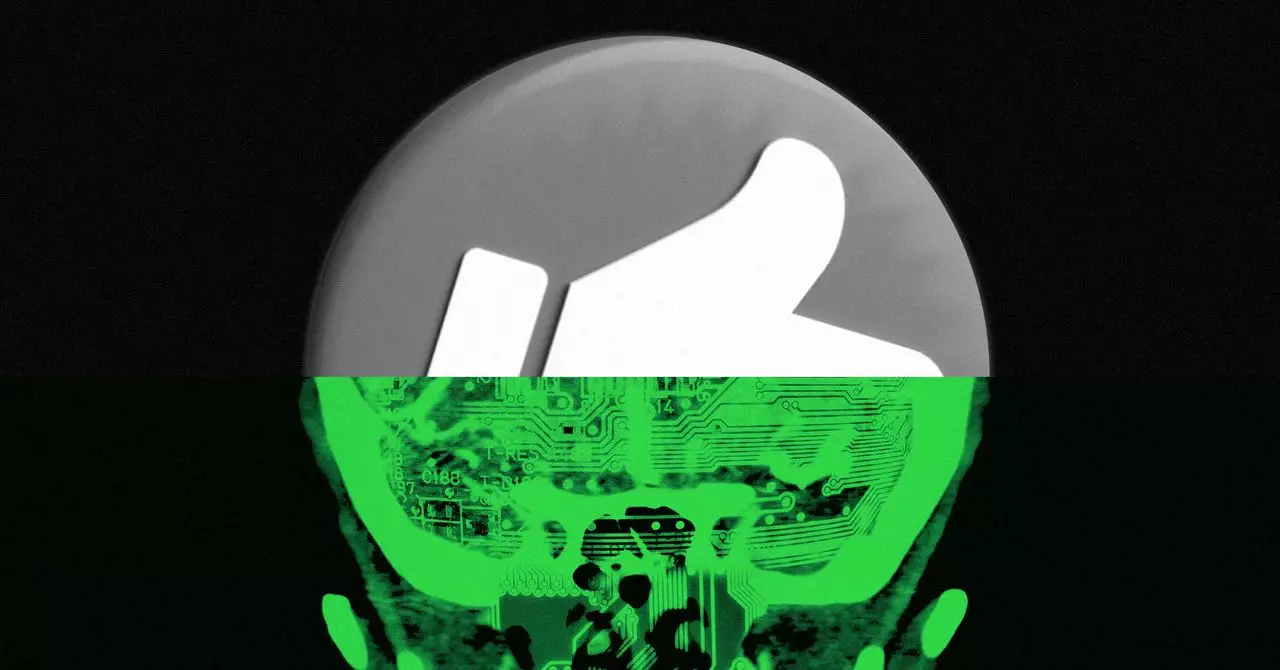The digital landscape is changing rapidly, primarily driven by advancements in artificial intelligence. One of the most iconic symbols of user engagement—the like button—stands at a crossroads. What was once a straightforward way to express approval is now being reevaluated through the lens of AI and user experience. As technology evolves, the significance of the like button may pivot from a mere engagement tool to a rich dataset that influences AI development and digital strategy.
Max Levchin, a key player in the technological sphere as cofounder of PayPal and CEO of Affirm, posits that the accumulating data from like buttons could prove invaluable for AI systems. This information can potentially bridge the gap between algorithm-driven decision-making and human-like judgment. In the realm of machine learning, it’s critical to understand that while AI can optimize based on clear reward functions, this often results in outcomes that diverge from human intuition. Levchin envisions using ‘like’ data to refine AI systems, enabling them to form conclusions that resonate more closely with human sensibilities.
Reinforcement Learning from Human Feedback
At the heart of AI training lies a concept known as Reinforcement Learning from Human Feedback (RLHF), where human preferences guide the training process. However, this method tends to be resource-intensive, often requiring significant human involvement to feed meaningful data back into the algorithm. Levchin highlights a critical issue here: the challenge of sourcing this preference data efficiently. Enter the like button, which, according to Levchin, embodies a treasure trove of human preference information waiting to be utilized for AI training. By repurposing this data, developers could effectively mitigate the costs typically associated with human supervisors and annotators.
The vast hinterland of data aggregated from user interactions with like buttons could thus emerge as one of the most significant assets in developing AI models that align with human behavior. This potential transforms the like button from a simple user engagement tool into a key component of advanced machine learning capabilities.
AI’s Role in Shaping Preferences
However, the relationship between the like button and AI extends in both directions. Not only could the like button provide data for training AI, but AI algorithms are already influencing user preferences in real time. Social media platforms deploy AI to analyze engagement metrics, not just to interpret likes, but to predict them as well. For example, platforms such as Facebook are continually evolving their algorithms, turning to AI to analyze and foresee user interactions, thereby potentially rendering the like button less essential.
In early 2024, Facebook tested a new AI-powered algorithm designed to enhance the recommendation system for Reels videos. The success of that trial, which resulted in increased watch times, underscores the growing effectiveness of AI in predicting user engagement without the user needing to express their preferences actively through likes.
Will the Like Button Become Obsolete?
Many industry leaders, including YouTube cofounder Steve Chen, ponder whether the like button will endure in a landscape dominated by sophisticated AI capable of predicting user preferences with remarkable accuracy. The logic follows that as algorithms become more adept at discerning user behavior patterns, the need for an explicit thumbs-up may diminish. However, Chen also makes a compelling argument for the like button’s longevity.
He suggests that the like button serves as an indispensable tool for responding to ever-evolving user needs, particularly during life’s unpredictable moments. Interests can shift dramatically due to personal circumstances, and the like button offers an intuitive, immediate means to express these changes in preference. Moreover, the like button functions as a vital link for advertisers seeking an avenue for feedback and engagement, seamlessly connecting viewers, content creators, and advertisers within the digital ecosystem.
The Future of User Engagement
As we contemplate the trajectory of user engagement tools in the digital age, the like button’s future may not be an inevitable decline but rather a metamorphosis. It could serve as a fundamental undercurrent, shaping AI algorithms while adapting to represent nuanced user preferences more effectively. The landscape will likely continue to evolve, and those who can leverage data intelligently will steer the direction of digital interaction, ensuring that the relationship between human sentiment and artificial intelligence remains a meaningful exploration of engagement.
By recognizing the potential for the like button to transcend its original purpose, developers can approach AI from a uniquely enriched perspective, one that appreciates human complexity while harnessing the efficiencies of technology. The next chapter in user interaction might not spell the end of the like button but could redefine its role in a symbiotic relationship with artificial intelligence.


Leave a Reply